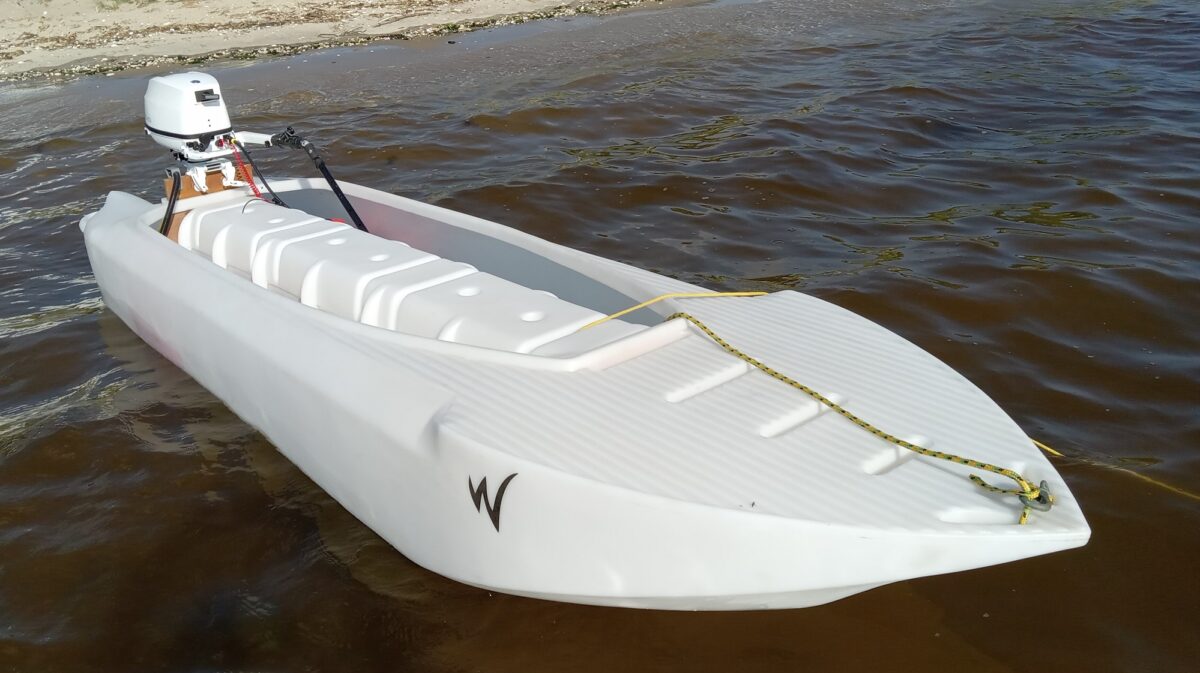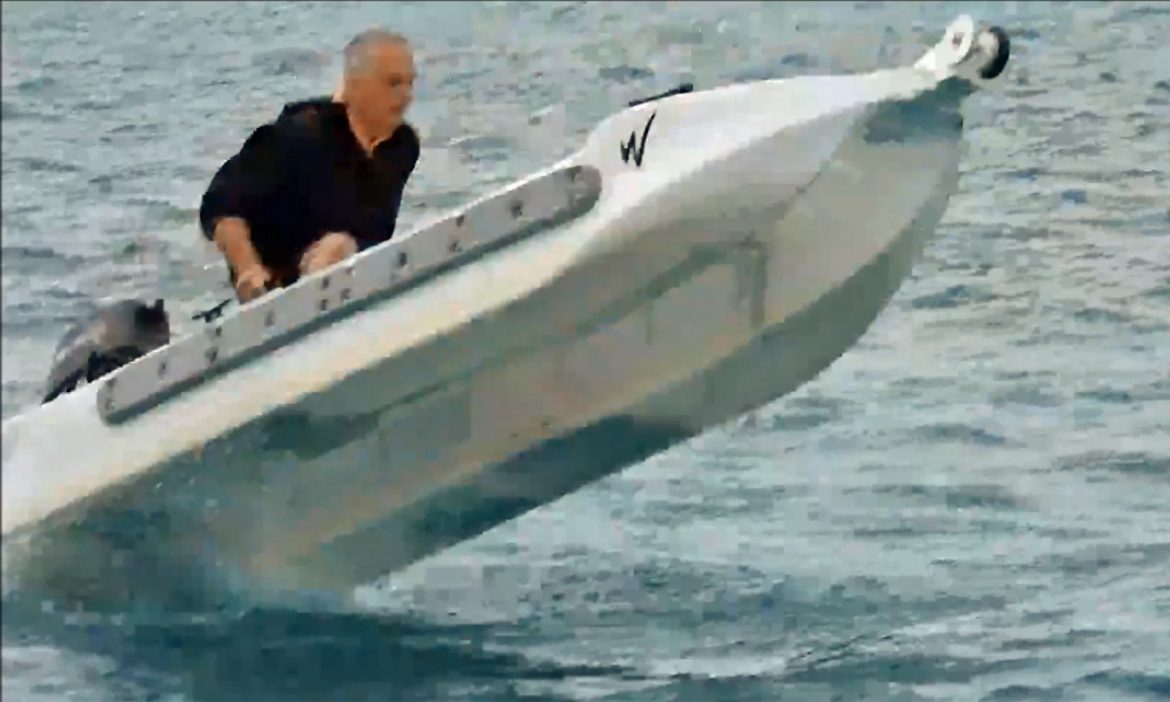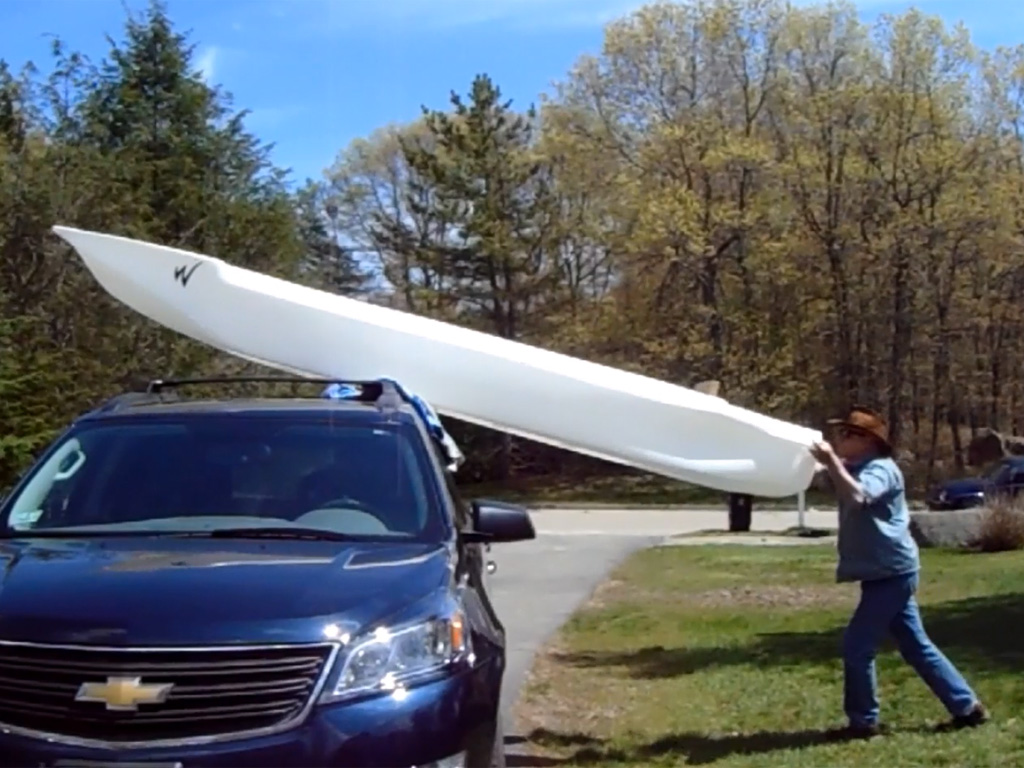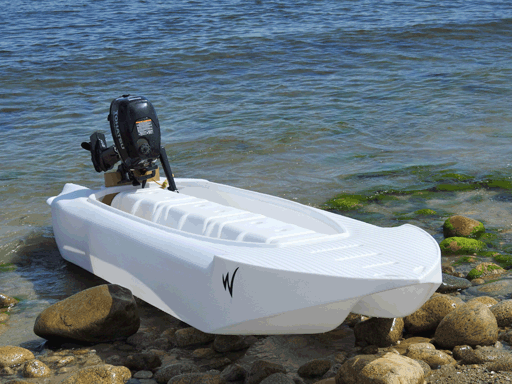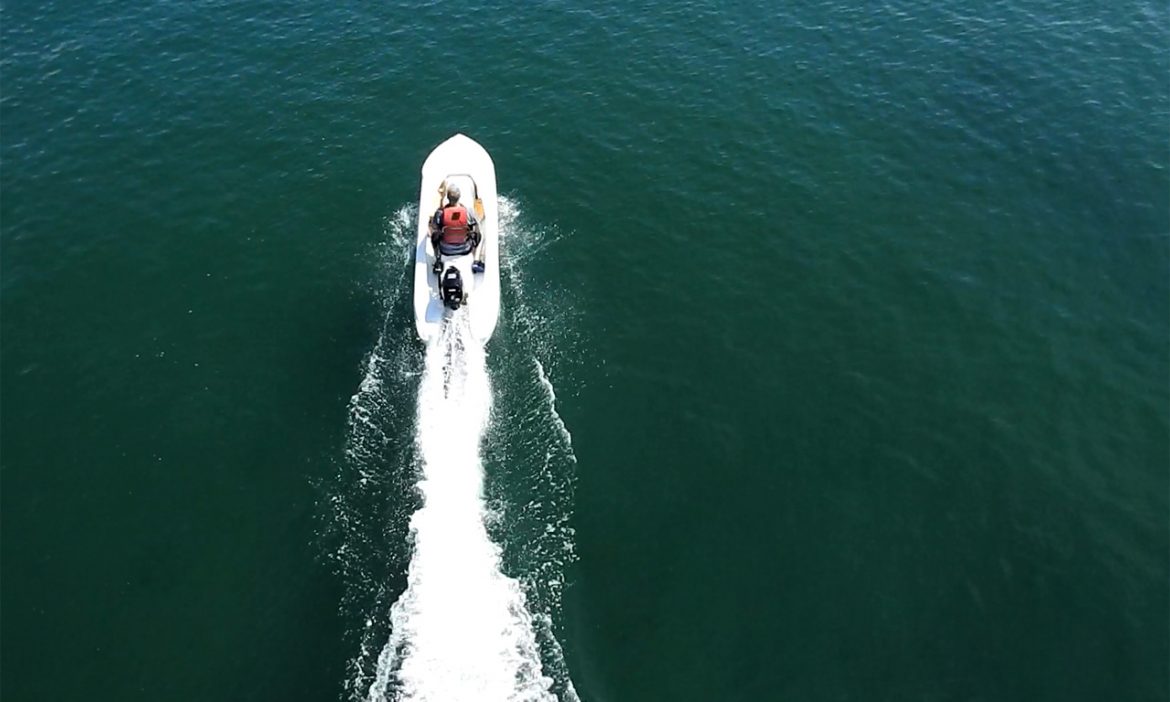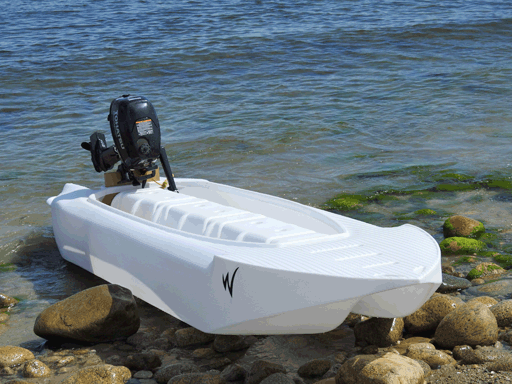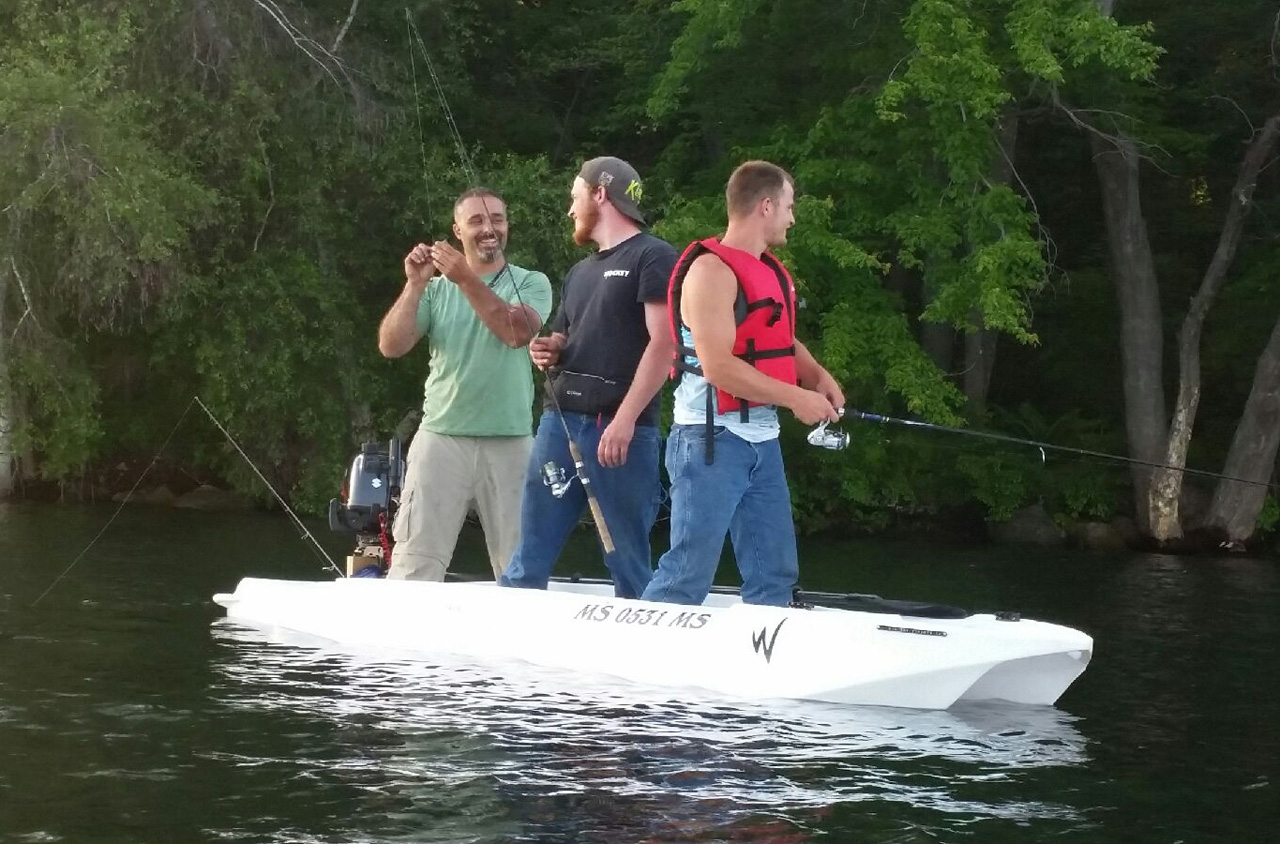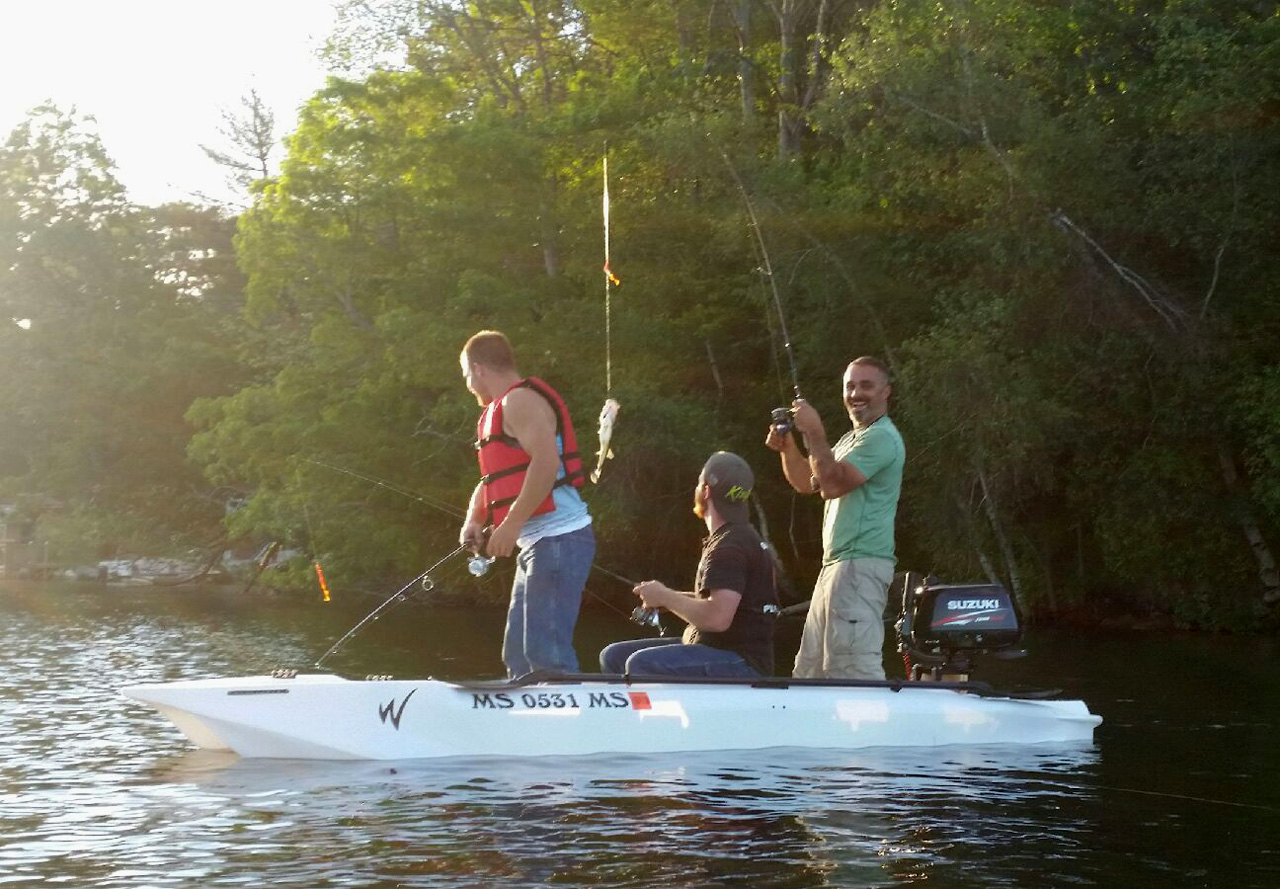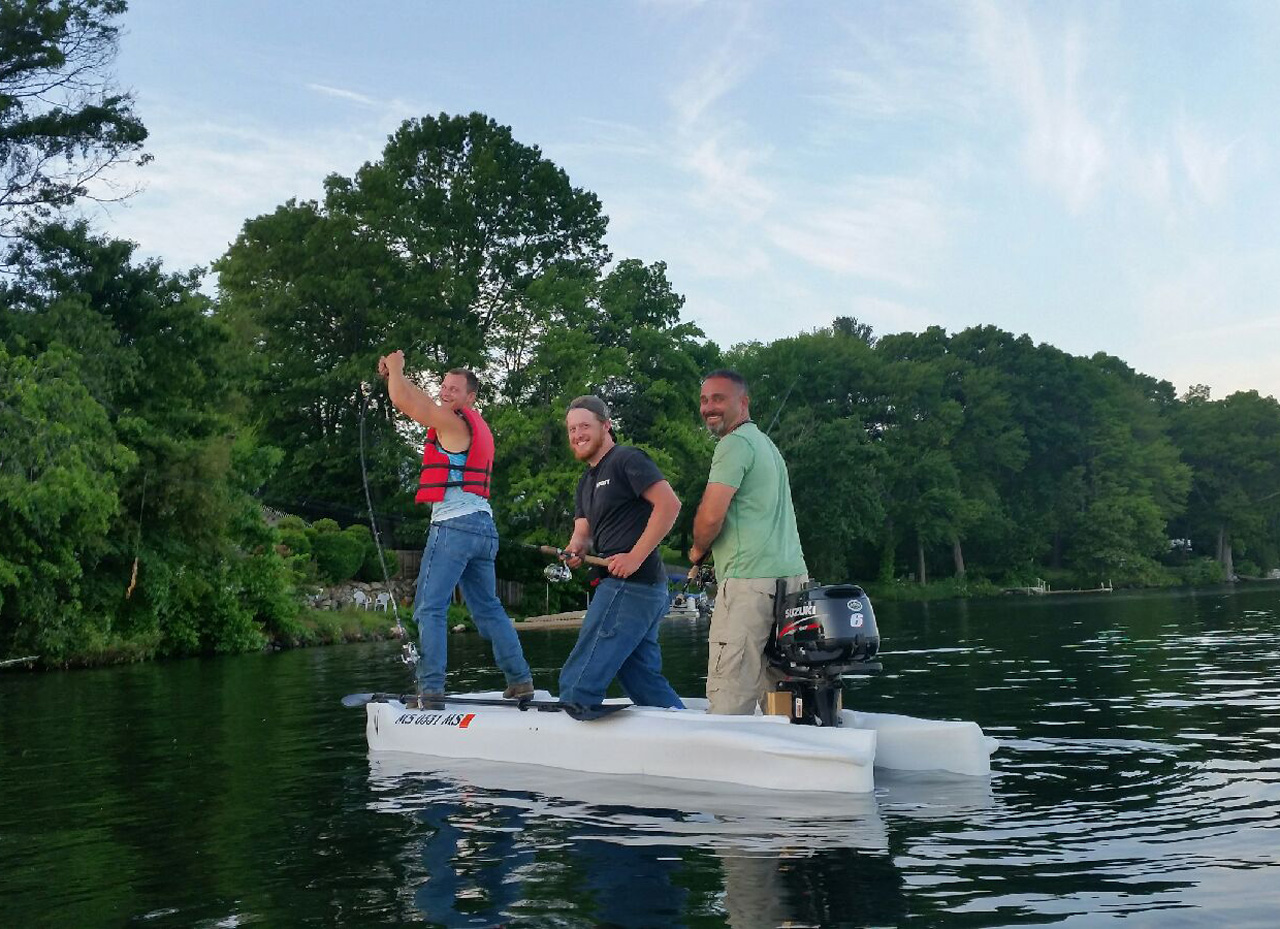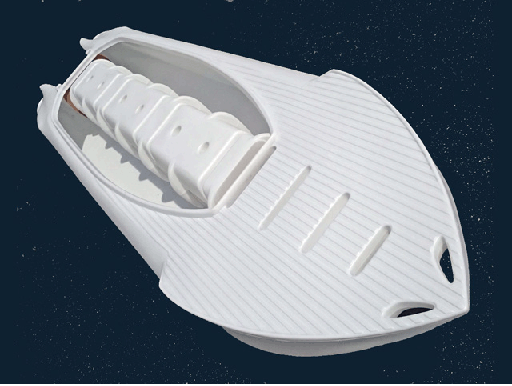Stability is a major speed factor
The link between stability and speed in boats is very strong, and nowadays most people are aware of the fact that thanks to their improved stability, multi-hulls are faster than comparable mono-hulls under sail as well as motorized.
Simply, boats differ by the volume of their hulls, and there are two ways to design a boat –
In the mono-hull form, most of the hull’s volume is concentrated along its center line, where it contributes nothing to lateral stability.
In the twin-hull (a.k.a. catamaran) form, the boat’s volume is split in two, and each half is distributed along the boat’s sides, where it works effectively to increase the sides’ buoyancy and thus the boat’s overall lateral stability.
In other words, when stability is concerned, the mono-hull form is wasteful, and the twin-hull form is efficient.
Balancing capability – the ergonomic factor that enhances stability
When it comes to micronautics, namely the science and art of designing very small and lightweight watercraft, the boat’s physical stability is not the only thing that matters, and ergonomics play an important role as well –
In order to better understand this principle, consider small fast vehicles that have no stability of their own, such as bicycles and motorcycles – Without a biker to balance them while in motion or standing in place, these vehicles would fall on their side. This said, such vehicles offer excellent means for their operator to balance them, and this balancing capability is enough to allow these vehicles to move at high speeds and over rugged terrain.
A similar, although reduced effect can be observed in other small, high-performance vehicles such as ATVs and snowmobiles, which offer their operator and passengers excellent means to balance themselves, and by doing so enhance the stability of their vehicle as well. Personal watercraft (PWC) are the aquatic version of these powerful and fast land vehicles.
So what do all the above mentioned small vehicles have in common in design and ergonomic terms? -They all feature a saddle type of seat. Typically, bikes and motorbikes feature higher saddles than ATVs, snowmobiles and PWC, but this is not always the case, since some bikes and motorbikes feature lower saddles.
In any case, saddle seats differ from other seats by the fact that their user rides them with a leg on each side, and does not sit on them with their legs in front of them. Ergonomically speaking, this allows the user to react to lateral changes intuitively, more quickly, and more effectively, and thus balance themselves and their small vehicle more efficiently.
The successful combination of the twin-hull (catamaran) and the saddle seat
The patented Wavewalk small watercraft (kayak, canoe, skiff, etc.) is unique in the sense that it combines a twin-hull (catamaran form) with a saddle seat that’s similar to the ones featuring in large-size PWC. Thus, Wavewalk kayaks are more stable, and they an be better balanced than any other kayak, canoe, or other small vessel of comparable size. This overall stability, namely the combined static stability of the boat and dynamic stability of its users, allows for unrivaled performance in speed terms, as well as in seaworthiness.
In order to get a better feeling for what this stability advantage translates to in speed terms, watch the following movies –
1. High speed motor kayak driven at high speed in the ocean chop
This video shows the kind of speed offered in the ocean, in rough water, by the Wavewalk S4, which is currently the world’s most stable as well as fastest kayak.
2. Speed comparison of S4 powered by a 5 HP vs 9.8 HP – flat water
This video offers a good opportunity to observe the S4 going at high speed on flat water, from the standpoint of another S4 driver going at a pretty good speed as well
3. The world speed record for vessels designated as kayaks
This video shows Captain Larry Jarboe, the current holder of the world speed record for motorized kayaks, driving his Wavewalk S4 at 17 mph (27 kmh) on flat water. Note that Captain Jarboe drives his motor kayak seated in the side-saddle position, and not in the more stable riding position. This is to say that from an ergonomic standpoint, he does not feel a need to take full advantage of the S4 design.
Stability, Speed, and Seaworthiness
A vessel designated as a kayak does not necessarily have to be a lame, unstable, uncomfortable, and slow one. It can be a fast, comfortable, and most seaworthy one, as demonstrated here. This performance level opens new possibilities for using these “kayaks” for offshore fishing, rescue and engineering, as well as boat tenders and fun boats.
Such a braod performance envelope is unique to the Wavewalk S4, which on top of these motorized applications, can serve as a wonderful paddle craft, both in a kayaking and canoeing mode, for one, two, or three passengers, seated and/or standing.
Car top transportation
And last but not least, unlike other fast and stable motorboats, the Wavewalk S4 does not require transportation by trailer. At 98 lbs (45 kg) without the motor, it can be car-topped by one person on the roof rack of any vehicle, carried to the beach, and launched practically anywhere.
